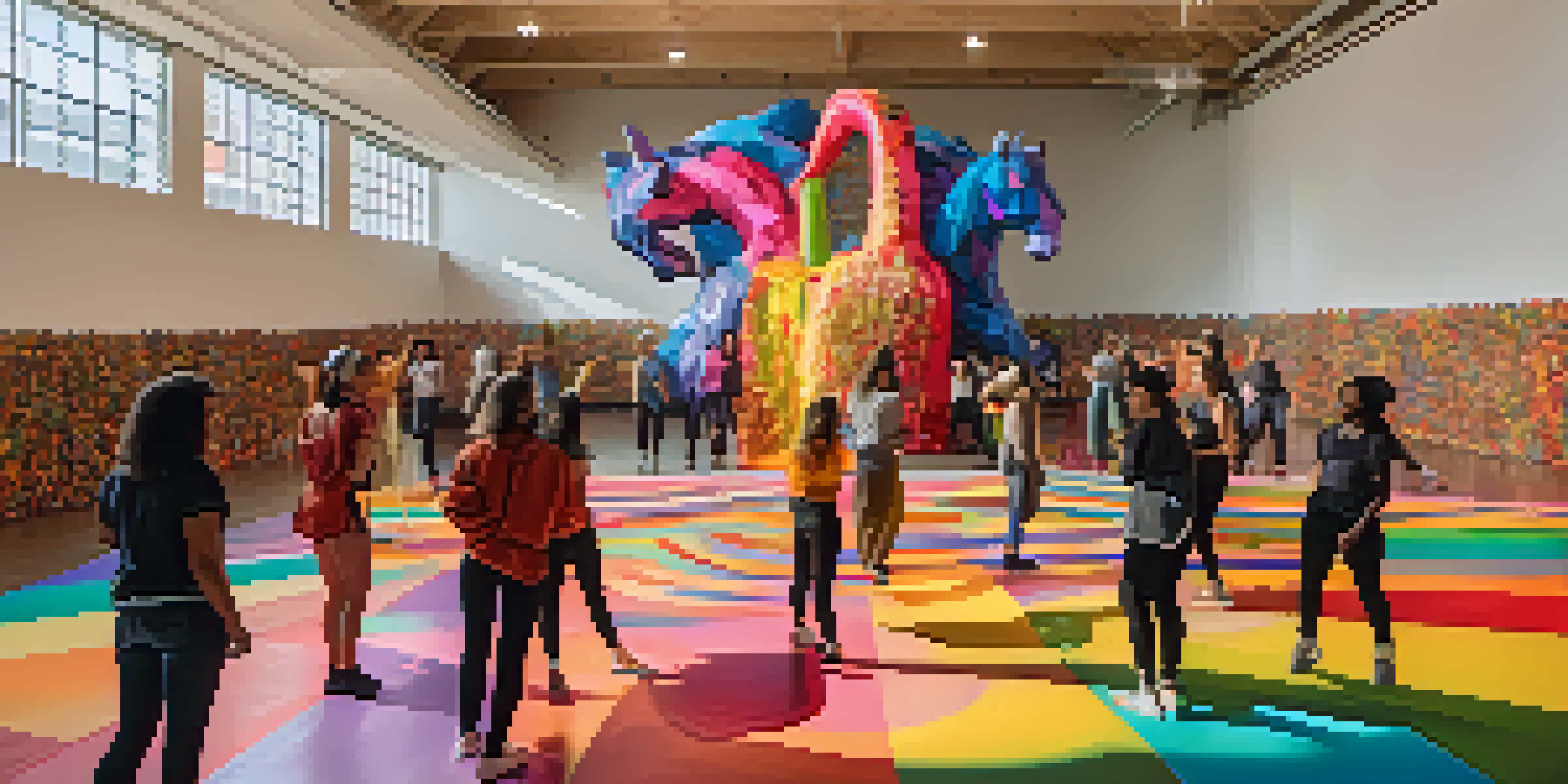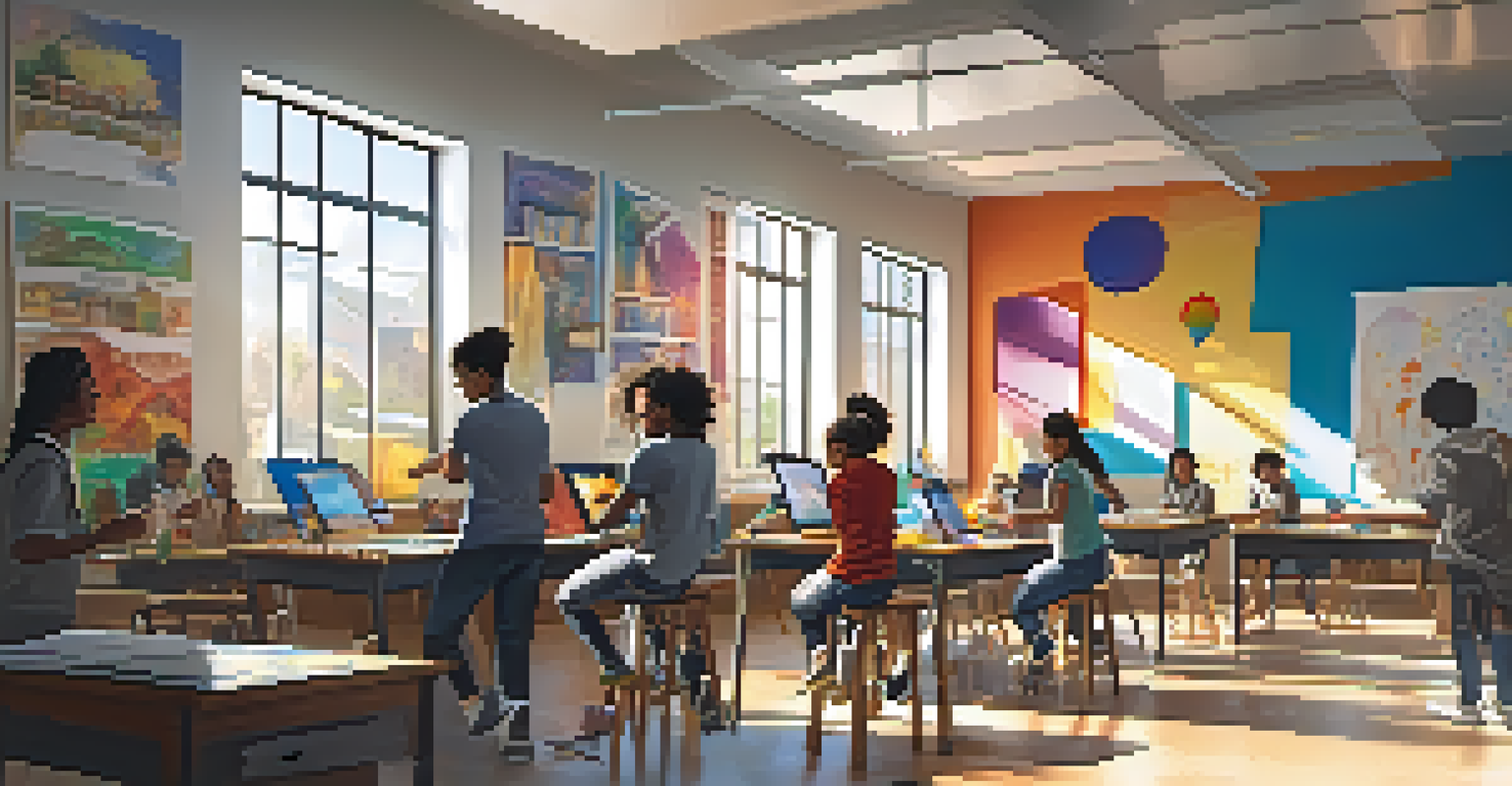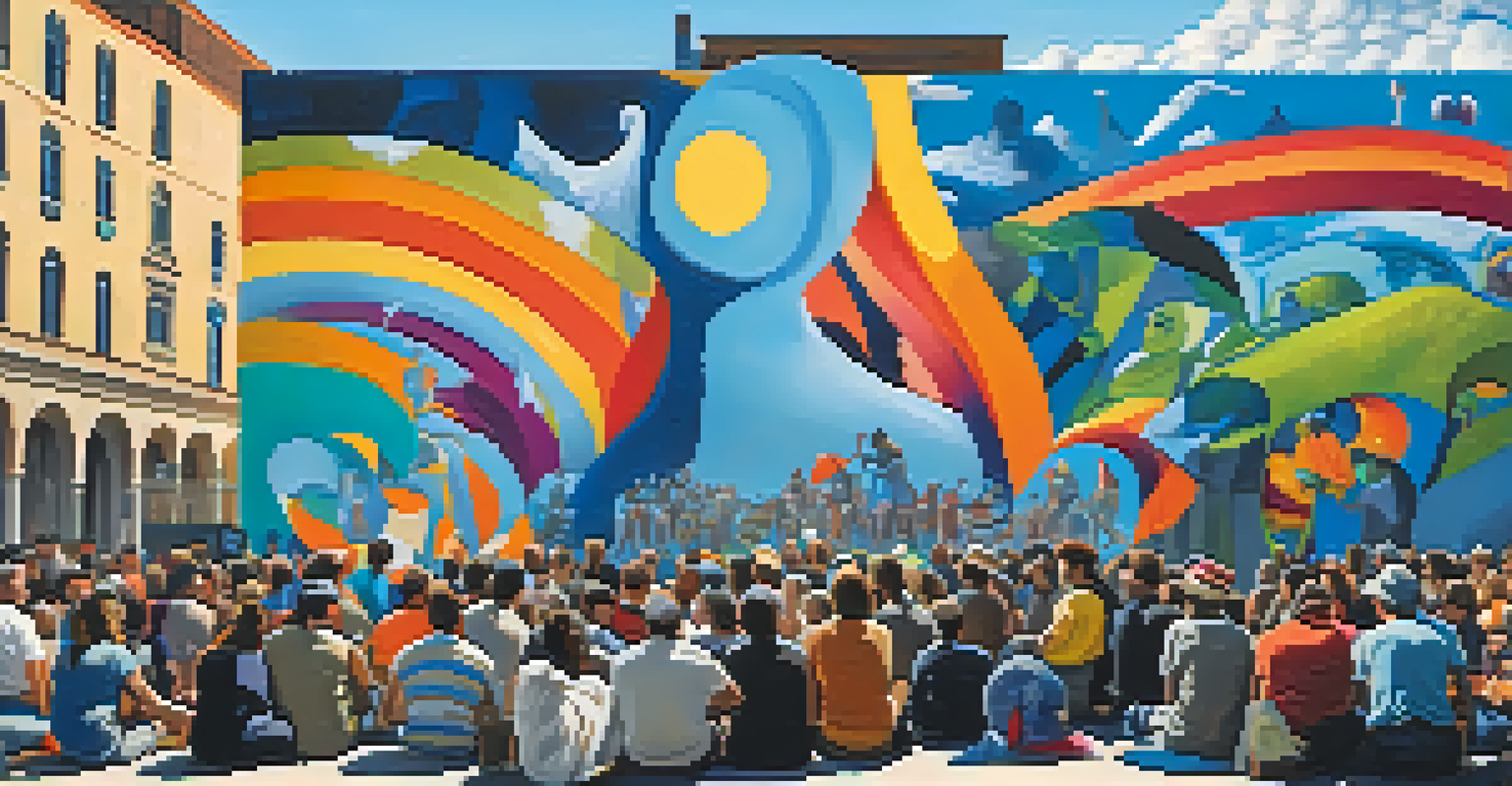Exploring Interdisciplinary Art: Collaborations Beyond Painting

Understanding Interdisciplinary Art and Its Importance
Interdisciplinary art blends various artistic disciplines to create new forms of expression. This approach allows artists to break free from traditional boundaries, encouraging innovation and collaboration. By merging techniques from different fields, artists can communicate complex ideas and emotions in a more relatable way.
Art is a collaboration between the artist and the audience, a way of expressing the inexpressible.
For instance, consider how a sculptor might work alongside a musician to create an installation that resonates both visually and audibly. This synergy not only enriches the viewing experience but also invites audiences to engage with art on multiple sensory levels. Thus, interdisciplinary art becomes a powerful tool for storytelling and connection.
Moreover, this type of art is increasingly relevant in today's world, where issues like climate change or social justice require multifaceted solutions. Interdisciplinary collaborations can provide deeper insights into these challenges, making art a vital medium for sparking dialogue and inspiring change.
The Role of Technology in Interdisciplinary Art
Technology plays a crucial role in expanding the boundaries of interdisciplinary art. From digital installations to augmented reality, artists are leveraging tech to create immersive experiences that captivate audiences. This integration allows for new methods of interaction, making art more accessible and engaging for everyone.

For example, a visual artist might collaborate with a software developer to create an interactive piece that responds to viewers' movements. This not only enhances the aesthetic appeal but also encourages personal connection, as each interaction alters the artwork. Such innovations demonstrate how technology can transform the way we perceive and experience art.
Interdisciplinary Art Fuels Innovation
By blending various artistic disciplines, interdisciplinary art fosters collaboration and encourages new forms of expression.
Furthermore, the use of technology can facilitate collaborations across geographical boundaries. Artists from different parts of the world can work together in real-time, sharing ideas and techniques through virtual platforms. This opens a world of possibilities, fostering a global community of creators who can collectively push the limits of artistic expression.
Collaboration Between Visual and Performing Arts
One of the most dynamic areas of interdisciplinary art is the collaboration between visual and performing arts. When dancers, actors, and visual artists come together, they create experiences that are rich in narrative and emotion. This fusion not only enhances the storytelling aspect but also elevates the emotional impact on the audience.
The role of the artist is to make the world a better place through creativity and innovation.
For instance, a performance might incorporate projected visuals that change with the rhythm of the dance, creating a mesmerizing synergy between movement and imagery. This interplay captivates viewers, drawing them deeper into the narrative being presented. Such collaborative efforts showcase the potential for innovation through shared artistic vision.
Moreover, these collaborations can change how we perceive traditional art forms. By integrating performance into visual art spaces, artists challenge the norms of both disciplines, encouraging audiences to rethink their definitions of art. This transformation helps to bridge gaps between different art forms, fostering a greater appreciation for the diversity of creative expression.
Interdisciplinary Art in Social Justice Movements
Interdisciplinary art often plays a significant role in social justice movements, providing a platform for marginalized voices. Artists from various backgrounds come together to create works that challenge societal norms and provoke thought. This collaborative spirit can amplify messages that resonate deeply with communities, inspiring action and solidarity.
For example, street artists might collaborate with poets and musicians to produce a public art installation that addresses issues like racial inequality or environmental justice. This combination of visual and auditory elements not only captures attention but also fosters dialogue among viewers. Such initiatives can spark conversations that lead to meaningful change.
Technology Enhances Artistic Experience
The integration of technology in art creates immersive experiences, allowing for greater audience interaction and accessibility.
Additionally, interdisciplinary projects can unite diverse communities around common goals. Artists can use their unique perspectives to address shared experiences, creating a sense of belonging and empowerment. This convergence of creativity and activism illustrates the profound impact art can have on societal issues.
The Impact of Interdisciplinary Art on Education
Interdisciplinary art is increasingly being integrated into educational settings, enhancing learning experiences for students. By combining various disciplines, educators can create engaging curricula that encourage creativity and critical thinking. This approach not only fosters artistic skills but also promotes collaboration among students.
For instance, a project might require students to work together to create a multimedia presentation that incorporates visual art, music, and drama. This hands-on experience allows students to explore their individual talents while learning the value of teamwork. Such collaborative projects can lead to a deeper understanding of the subject matter, making learning more enjoyable and effective.
Moreover, interdisciplinary art education prepares students for the complexities of the modern world. As they learn to navigate different art forms and perspectives, they develop the adaptability and innovation necessary to succeed in various fields. This holistic approach equips future generations with the skills they need to thrive in an increasingly interconnected world.
Case Studies of Successful Interdisciplinary Collaborations
Several notable case studies highlight the success of interdisciplinary collaborations in the art world. One example is the collaboration between the visual artist Olafur Eliasson and scientists to create installations that explore climate change. By combining artistic vision with scientific expertise, they were able to convey complex environmental issues in a compelling and accessible manner.
Another inspiring case is the 'Blue Man Group,' which merges visual art, music, and performance to create a unique entertainment experience. Their innovative use of technology and humor captivates audiences while promoting creativity and collaboration. This fusion of disciplines exemplifies how interdisciplinary art can push boundaries and engage viewers on multiple levels.
Art as a Catalyst for Social Change
Interdisciplinary art plays a critical role in social justice movements by amplifying marginalized voices and inspiring community dialogue.
These examples underscore the potential of interdisciplinary collaboration to foster creativity and innovation. By bringing together diverse perspectives and expertise, artists can create works that resonate with audiences and provoke thought. As we continue to explore these collaborations, we unlock the potential for even greater artistic achievements.
The Future of Interdisciplinary Art
As we look to the future, the landscape of interdisciplinary art is poised for even greater evolution. With advancements in technology and an increasing focus on collaboration, artists are finding new ways to express their creativity. This dynamic environment encourages experimentation and risk-taking, leading to groundbreaking works.
Moreover, the global interconnectedness facilitated by the internet allows artists from diverse backgrounds to collaborate effortlessly. This exchange of ideas and inspirations can lead to innovative art forms that reflect the richness of cultural diversity. As artists continue to break down barriers, the future of interdisciplinary art promises to be vibrant and exciting.

Ultimately, the growing appreciation for interdisciplinary art signifies a shift in how we understand and engage with creativity. As audiences become more open to diverse forms of expression, artists will continue to explore the boundaries of their craft. This evolution will not only enrich the art world but also contribute to a deeper understanding of the human experience.